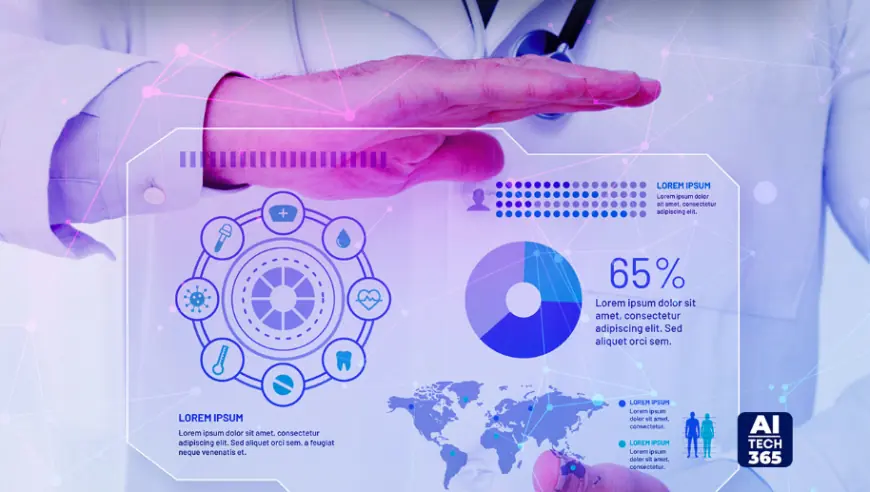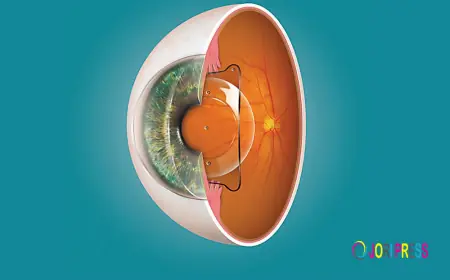Predictive Analytics in Healthcare: Transforming Patient Care Through Data
The healthcare sector is undergoing a digital revolution, with predictive analytics leading the charge in improving clinical outcomes and operational efficiency. This data-driven approach uses historical and real-time healthcare information to forecast future health events, enabling providers to deliver smarter, more proactive care. According to Statista, the global predictive analytics software market is projected to reach $41.52 billion by 2028, underscoring its growing relevance in the healthcare industry.

This guide explores the fundamentals of predictive analytics in healthcare, including its key applications, benefits, real-world use cases, and the challenges that come with implementation. Let’s dive into how this technology is reshaping the future of medicine.
What is Predictive Analytics in Healthcare?
Predictive analytics in healthcare involves using advanced algorithms and statistical models to uncover patterns in large datasets, enabling healthcare professionals to anticipate future medical outcomes. These datasets often include:
Electronic Health Records (EHRs)
Insurance claims
Genetic profiles
Lifestyle and behavioral data
By examining this information, predictive models can:
Forecast potential health events – from disease outbreaks to hospital readmissions
Identify high-risk individuals for early intervention
Streamline resource allocation by anticipating patient care needs
Key Applications of Predictive Analytics in Healthcare
Predictive analytics is proving indispensable across various domains in healthcare. Here are some of its most impactful uses:
1. Chronic Disease Prediction
Healthcare providers can identify individuals at high risk for conditions like diabetes, cancer, and heart disease—allowing for early diagnosis and timely preventive care.
2. Reducing Hospital Readmissions
By analyzing post-discharge data, providers can predict which patients are likely to be readmitted and implement targeted care plans to minimize risks.
3. Personalized Medicine
Predictive tools use genetic, lifestyle, and clinical data to create customized treatment plans tailored to individual patient profiles.
4. Operational Efficiency
Hospitals can use predictive analytics to optimize staffing, manage bed availability, and allocate medical equipment based on projected patient demand.
5. Fraud Detection
Healthcare organizations use analytics to detect suspicious patterns in claims, helping prevent fraudulent billing practices.
6. Public Health Surveillance
Predictive models help track disease outbreaks and forecast their spread, enabling timely responses and public health interventions.
Also Read: Why Every Business Needs an Enterprise Virtual Assistant
How Predictive Analytics Improves Patient Outcomes
● Early Detection and Prevention
Predictive models enable healthcare providers to detect diseases in their early stages—often before symptoms appear—leading to faster intervention and better outcomes.
● Tailored Treatment Plans
By factoring in a patient's medical history, genetics, and lifestyle, providers can offer more personalized and effective treatment strategies.
● Fewer Complications and Readmissions
Hospitals can reduce the risk of surgical complications and prevent avoidable readmissions by identifying at-risk patients in advance.
● Empowered Patient Engagement
Patients receive insights into their health risks and are more motivated to take preventive measures, resulting in better long-term health.
● Higher Patient Satisfaction
Predictive care fosters faster diagnoses and more accurate treatments, enhancing the overall patient experience and satisfaction.
Real-World Impact: Examples of Predictive Analytics in Action
▶ Preventing Hospital Readmissions
In 2018, hospital readmission rates in adults averaged 14%, with a large portion attributed to conditions like heart failure, diabetes, and COPD. Predictive analytics uses:
Socioeconomic indicators to assess post-discharge risks
EHR data to evaluate treatment histories and outcomes
This proactive approach allows care teams to deliver targeted follow-up, reducing readmission rates and improving patient outcomes.
Benefits of Predictive Analytics in Healthcare
The growing adoption of predictive analytics offers a range of measurable advantages:
✅ Better Clinical Outcomes through early detection and intervention
✅ Proactive Preventive Care that reduces disease incidence
✅ More Personalized Treatments based on unique patient data
✅ Operational Efficiency in resource use and scheduling
✅ Cost Savings by avoiding emergency treatments and hospitalizations
✅ Smarter, Data-Driven Decisions by clinicians and administrators
Challenges to Overcome
While promising, predictive analytics in healthcare comes with its own set of challenges:
⚠️ Data Quality & Standardization: Inaccurate or inconsistent data can compromise model reliability.
? Privacy & Security: Managing sensitive health information requires robust data governance and compliance with regulations like HIPAA.
⚖️ Ethical Concerns: Algorithmic bias and fairness remain critical considerations in clinical decision-making.
? High Implementation Costs: Advanced tools require significant investment in infrastructure and skilled personnel.
? Model Transparency: Clinicians need to understand how predictive models make decisions to trust and act on them confidently.
The Future of Predictive Analytics in Healthcare
Several trends are shaping the future of predictive analytics in healthcare:
AI Integration: Machine learning and deep learning are enhancing prediction accuracy and real-time analysis.
Wearable Devices: Smartwatches and fitness trackers are providing real-time health data that feed into predictive models.
Population Health Focus: Healthcare systems are shifting from individual treatment to proactive, community-wide health management using predictive insights.
Conclusion
Predictive analytics in healthcare is not just a trend—it’s a strategic shift toward proactive, personalized, and data-informed patient care. By leveraging the power of big data, healthcare providers can forecast outcomes, prevent disease progression, and optimize every aspect of care delivery.
As adoption grows, predictive analytics will continue to unlock new opportunities for improving population health, reducing costs, and delivering higher-quality, patient-centered care.
Also Read: Automated Data Analysis: A Comprehensive Guide
What's Your Reaction?
 Like
0
Like
0
 Dislike
0
Dislike
0
 Love
0
Love
0
 Funny
0
Funny
0
 Angry
0
Angry
0
 Sad
0
Sad
0
 Wow
0
Wow
0
















































